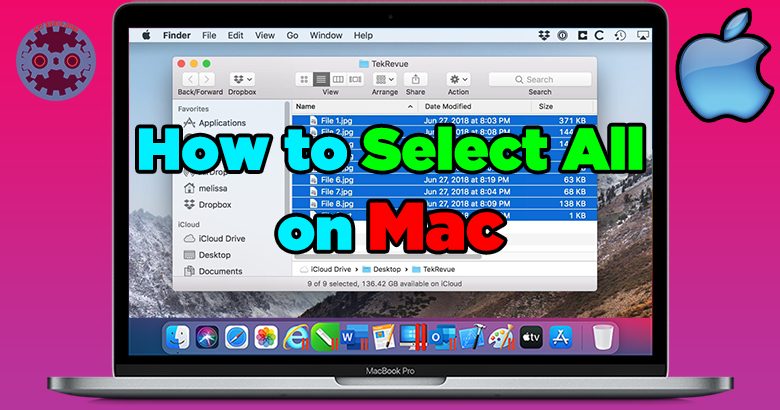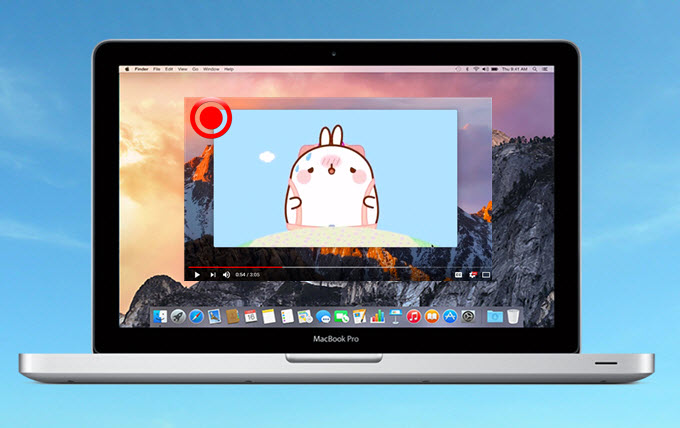Looking for a way to lock the keyboard on your Macbook? Well, you’re in luck! In this article, I’ll guide you through the simple steps to keep your keyboard locked and prevent any accidental keystrokes or unauthorized access. Whether you’re working on a project, watching a movie, or simply stepping away from your computer, knowing how to lock the keyboard on your Macbook can provide peace of mind and protect your privacy. So, let’s dive right in and learn how to lock keyboard on Macbook!
Table of Contents
- 1 How to Lock Keyboard on MacBook: A Step-by-Step Guide
- 2 Frequently Asked Questions
- 2.1 How can I lock the keyboard on my MacBook?
- 2.2 Method 1: Using the Keyboard Viewer
- 2.3 Method 2: Using a Keyboard Shortcut
- 2.4 Method 3: Using the “Lock Screen” Feature
- 2.5 Can I use a password to unlock the keyboard on my MacBook?
- 2.6 Will locking the keyboard on my MacBook prevent accidental keystrokes?
- 2.7 Can I customize the keyboard lock settings on my MacBook?
- 3 Final Thoughts
How to Lock Keyboard on MacBook: A Step-by-Step Guide
Imagine you’re in the middle of an important presentation or immersed in a writing session, and suddenly, your cat decides to make your keyboard its new playground. We’ve all been there! To prevent such mishaps and ensure uninterrupted work, knowing how to lock the keyboard on your MacBook can be a lifesaver. In this comprehensive guide, we’ll walk you through the process step by step, so you can easily lock and unlock your MacBook’s keyboard when needed.
Why Locking Your MacBook’s Keyboard Can Be Helpful
Before diving into the instructions, let’s first understand why locking your MacBook’s keyboard can be beneficial in certain situations. Here are a few reasons why you might want to lock your keyboard:
1. Prevent accidental keystrokes: Sometimes, we might unintentionally press keys while our hands are away from the keyboard, leading to unwanted actions. Locking the keyboard eliminates the possibility of accidental keystrokes and ensures that your work remains undisturbed.
2. Avoid accidental input during cleaning or transportation: When you clean your MacBook’s keyboard or carry it around, there’s a chance of accidentally triggering commands or opening applications. By locking the keyboard, you can safely clean or transport your device without any unwanted interactions.
3. Protect against unauthorized access: If you need to step away from your MacBook but want to keep it secure and prevent others from accessing your files or making any changes, locking the keyboard offers an additional layer of protection. It ensures that no one can tamper with your work while you’re away.
Methods to Lock and Unlock Your MacBook’s Keyboard
Now, let’s explore different methods to lock and unlock your MacBook’s keyboard. You can choose the one that suits your preferences and situation the best.
Method 1: Using the Built-in Keyboard Shortcut
Your MacBook comes with a convenient built-in keyboard shortcut that allows you to quickly lock and unlock the keyboard. Follow these steps to use this method:
1. Press and hold the Control + Command + Q keys simultaneously.
2. A lock screen will appear, indicating that your MacBook’s keyboard is locked.
3. To unlock the keyboard, press any key or swipe on the trackpad.
This method offers a quick and straightforward way of locking and unlocking your MacBook’s keyboard, especially when you’re in a hurry or need to step away momentarily.
Method 2: Utilizing the Touch ID Power Button
If you own a MacBook model equipped with a Touch ID sensor integrated into the power button, you can also use it to lock your keyboard. Here’s how you can do it:
1. Place your finger on the Touch ID sensor located on the power button.
2. Keep your finger on the sensor for a couple of seconds.
3. Your MacBook’s keyboard will be locked, and the screen will turn off.
4. To unlock the keyboard, tap any key or place your finger on the Touch ID sensor again.
This method provides a convenient way to lock and unlock your MacBook’s keyboard while utilizing the Touch ID functionality, which adds an extra layer of security.
Method 3: Using Third-Party Software
If you prefer more advanced features or require additional customization options, there are third-party software solutions available that allow you to lock your keyboard. These applications offer advanced features like setting a specific hotkey, automatic locking based on conditions, and more. Here are a few popular options:
- KeyboardCleanTool: This software provides a simple interface to lock and unlock your keyboard with a click of a button. It also offers multiple customization options to suit your preferences.
- Keyboard Locker: With Keyboard Locker, you can lock your keyboard using a designated hotkey. This program also lets you customize various settings, such as delay time and enabling or disabling specific keys.
- Unlox: If you own an iPhone or Apple Watch, Unlox allows you to lock and unlock your MacBook’s keyboard using your mobile device’s biometric authentication features. It provides a seamless and secure solution.
Remember to download and install third-party software only from trusted sources to ensure your MacBook’s security.
Method 4: Enabling Screen Saver Password Protection
Another option to indirectly lock your MacBook’s keyboard is by enabling screen saver password protection. This method ensures that anyone trying to access your MacBook will require a password to unlock it, effectively locking the keyboard in the process. Follow these steps to enable screen saver password protection:
1. Click on the Apple menu () in the top-left corner of your screen.
2. Select “System Preferences” from the drop-down menu.
3. Choose “Security & Privacy.”
4. Go to the “General” tab.
5. Check the box next to “Require password” and set the desired time interval from the drop-down menu.
6. Close the System Preferences window.
Now, whenever your MacBook’s screen saver activates based on the set time interval, it will require you or an authorized user to enter the password to unlock the keyboard.
Method 5: Using External USB or Bluetooth Keyboards
If you regularly use an external USB or Bluetooth keyboard with your MacBook, you have the option to disable the built-in keyboard while the external one is connected. This can effectively lock the keyboard. Here’s how to do it:
1. Connect your external keyboard to your MacBook via USB or Bluetooth.
2. Click on the Apple menu () in the top-left corner of your screen.
3. Select “System Preferences” from the drop-down menu.
4. Choose “Keyboard.”
5. Go to the “Keyboard” tab.
6. Check the box next to “Disable built-in keyboard when an external keyboard is connected.”
7. Close the System Preferences window.
By enabling this setting, your MacBook will recognize the external keyboard as the primary input device, effectively locking the built-in keyboard. Upon disconnecting the external keyboard, your MacBook’s built-in keyboard will automatically unlock.
Locking your MacBook’s keyboard can be incredibly useful, whether you want to prevent accidental keystrokes, protect against unauthorized access, or safely clean and transport your device. By following the methods outlined in this guide, you can easily lock and unlock your MacBook’s keyboard, ensuring a seamless and uninterrupted workflow.
Remember, the built-in keyboard shortcut and Touch ID power button offer the quickest and most accessible ways to lock and unlock your MacBook’s keyboard. However, if you prefer additional features and customization options, third-party software can be a great choice.
Choose the method that suits your needs and preferences, and enjoy the peace of mind that comes with a locked keyboard on your MacBook. Happy typing!
Frequently Asked Questions
How can I lock the keyboard on my MacBook?
To lock the keyboard on your MacBook, you can use the following methods:
Method 1: Using the Keyboard Viewer
1. Go to the Apple menu in the top-left corner of the screen and click on “System Preferences.”
2. In the System Preferences window, click on “Keyboard.”
3. Click on the “Keyboard” tab and then check the box next to “Show Keyboard & Character Viewers in menu bar.”
4. Close the System Preferences window.
5. Now, you’ll see a new icon in the menu bar at the top-right corner of the screen. Click on it and select “Show Keyboard Viewer.”
6. The Keyboard Viewer window will appear, displaying a virtual representation of your keyboard.
7. Click on the “Options” button at the bottom of the Keyboard Viewer window and check the box next to “Enable Keyboard Lock.”
8. Close the Keyboard Viewer window.
Now, whenever you want to lock your keyboard, you can click on the Keyboard Viewer icon in the menu bar and select “Enable Keyboard Lock.”
Method 2: Using a Keyboard Shortcut
1. Press the combination of keys Control + Shift + Eject (or the Power button on newer MacBooks without an Eject key).
2. Your MacBook’s screen will turn off, and the keyboard will be locked.
To unlock the keyboard, simply press any key or move the trackpad/mouse.
Method 3: Using the “Lock Screen” Feature
1. Press the combination of keys Control + Command + Q to quickly lock your screen.
This method not only locks the keyboard but also locks the entire screen, requiring your password to unlock.
Can I use a password to unlock the keyboard on my MacBook?
No, there is no built-in feature on MacBook that allows you to lock the keyboard with a password. However, you can use the “Lock Screen” feature (Control + Command + Q) to lock the entire screen, requiring a password to unlock both the keyboard and the screen.
Will locking the keyboard on my MacBook prevent accidental keystrokes?
Yes, locking the keyboard on your MacBook will prevent accidental keystrokes. However, it’s important to note that locking the keyboard does not disable the trackpad or mouse, so be mindful of accidental clicks or touches while the keyboard is locked.
Can I customize the keyboard lock settings on my MacBook?
No, the keyboard lock settings on a MacBook are not customizable. The available methods to lock the keyboard are the ones mentioned above (using the Keyboard Viewer, a keyboard shortcut, or the “Lock Screen” feature). If you require more advanced keyboard lock settings, you may need to explore third-party software options.
Final Thoughts
To lock the keyboard on your MacBook, you have a few simple options. One way is to use a keyboard shortcut, specifically the “Control + Shift + Power” combination. Another method is to set up a hot corner in your system preferences, so that moving your mouse to a specific corner of the screen will activate the keyboard lock. You can also use a third-party app like KeyboardCleanTool, which allows you to lock the keyboard with just a click. Remember, knowing how to lock the keyboard on your MacBook is useful when you want to prevent accidental typing or protect your privacy. So, give these methods a try and keep your keyboard secure.

